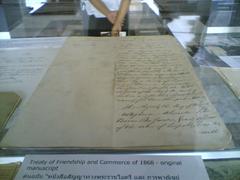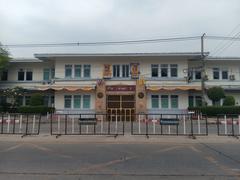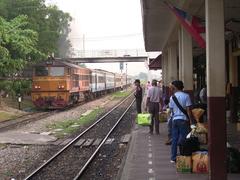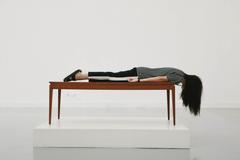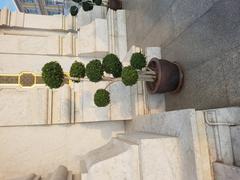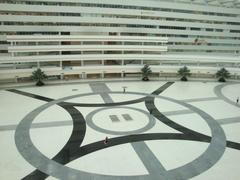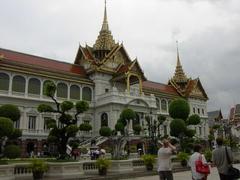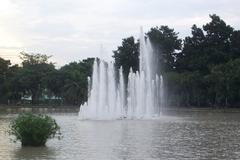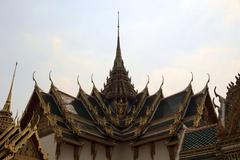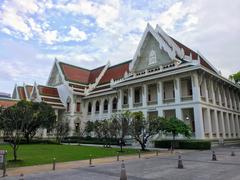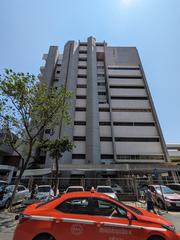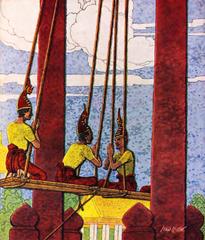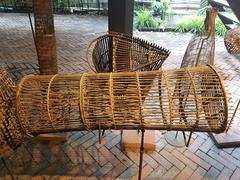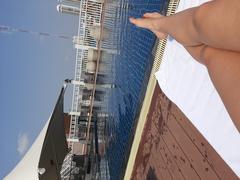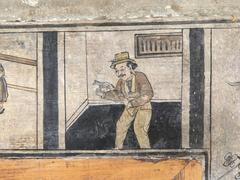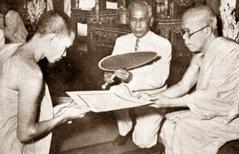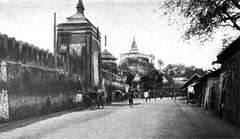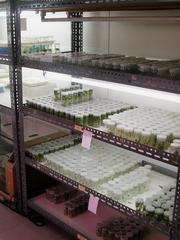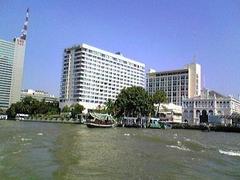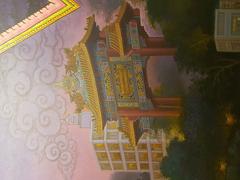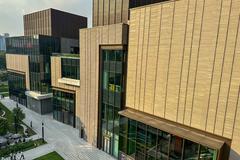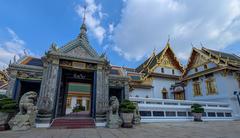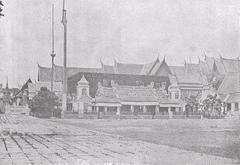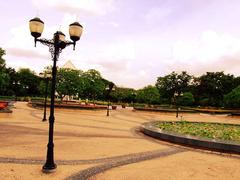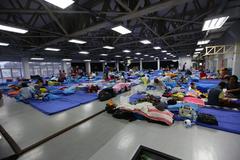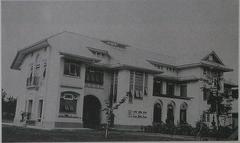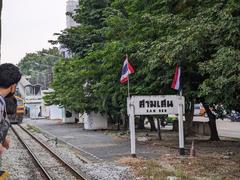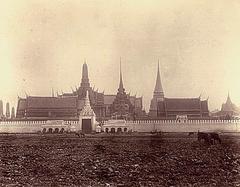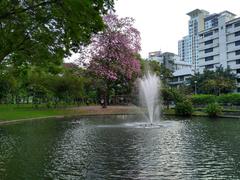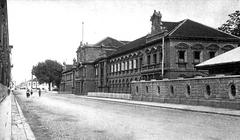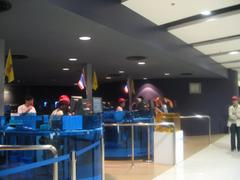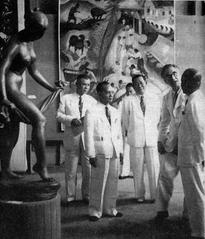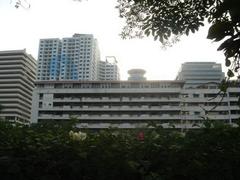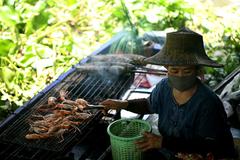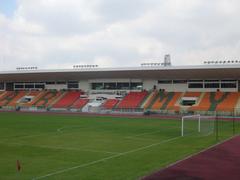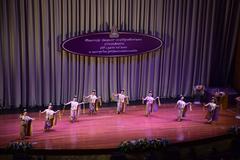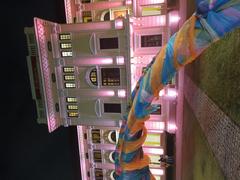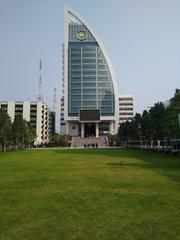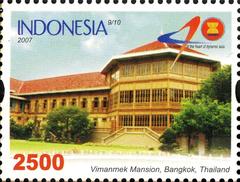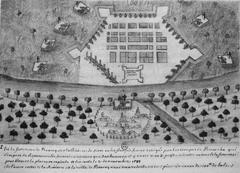Sommuthi Thevaraj Uppabat Royal Hall: Visiting Hours, Tickets, and Historical Significance in Bangkok
Date: 04/07/2025
Introduction
Nestled within the illustrious Grand Palace in Bangkok, the Sommuthi Thevaraj Uppabat Royal Hall stands as a quintessential symbol of Thailand’s royal heritage and architectural mastery. Built during the reign of King Rama I in 1782, this hall—translating to “the Hall of the Royal Accession”—has played a pivotal role in the ceremonial life of the Chakri Dynasty. It is the venue for coronations, royal funerals, and state banquets, each ceremony reinforcing the monarchy’s spiritual and cultural authority (Agoda; Holidify).
While the interior is generally closed to the public except during official royal ceremonies, visitors can admire its majestic exterior and explore the surrounding Grand Palace grounds daily. This guide provides essential information, from opening hours and ticketing to cultural etiquette and nearby attractions, ensuring you have an enriching and respectful experience at one of Bangkok’s most significant landmarks (Discover Walks; Lonely Planet).
Table of Contents
- Historical Background and Role in Thai History
- Architectural and Artistic Significance
- Cultural and Ceremonial Importance
- Location and Accessibility
- Visiting Information: Hours, Tickets, and Etiquette
- Nearby Attractions
- Visitor Tips
- Frequently Asked Questions (FAQ)
- Conclusion
- References and Further Reading
Historical Background and Role in Thai History
Origins and Construction
Located in the Grand Palace’s Middle Court, the Sommuthi Thevaraj Uppabat Royal Hall was constructed as part of Bangkok’s establishment as the capital under King Rama I in 1782. The Grand Palace itself signaled the rise of the Chakri Dynasty, with each monarch contributing to its expansion and evolution (Agoda; Discover Walks).
Role in Royal Ceremonies and State Functions
The hall has been the stage for pivotal royal events, notably coronations where the king is formally presented as Thailand’s supreme ruler. Its close association with “uppabat,” meaning auspicious or supreme event, underscores its prominence. It is also tied to the Phra Maha Prasat group, alongside other significant halls used for royal funerals and presentations of royal regalia (Tripoto; Veronika’s Adventure).
Chakri Dynasty and Modernization
The hall reflects King Rama I’s vision to consolidate royal power and modernize the kingdom. Later monarchs, notably Rama IV and Rama V, expanded and renovated the palace, integrating Western elements while maintaining traditional Thai aesthetics. Through centuries, the hall has projected Thailand as a unified and sovereign nation, hosting dignitaries and marking key reforms (Sukhumvit Today).
Architectural and Artistic Significance
The Sommuthi Thevaraj Uppabat Royal Hall is a masterpiece of Rattanakosin architecture, characterized by multi-tiered roofs, gilded spires, and intricately carved woodwork. The high, layered roof is adorned with chofah (bird-like finials) and elaborate gables. Inside, murals depict Thai mythology, Buddhist cosmology, and scenes from the Ramakien epic (Agoda).
Gold leaf, colored glass mosaics, and lacquered woodwork illustrate the kingdom’s artistic traditions and the monarchy’s divine authority. The spatial layout mirrors Buddhist cosmology and royal hierarchy, with an elevated throne area and symbolic motifs like naga (mythical serpents) and garuda (mythical birds) (Holidify).
Ongoing government and royal preservation efforts ensure the hall retains its historical integrity, employing traditional techniques for restoration (Holidify).
Cultural and Ceremonial Importance
Ceremonial Functions
The hall remains central to Thai royal rituals, including coronations, royal funerals, and annual ceremonies that reinforce the monarchy’s spiritual bond with the nation. Its design accommodates monks, courtiers, and dignitaries, embodying centuries-old protocol.
National Identity and Artistic Heritage
The hall is a symbol of Thai unity, tradition, and reverence for the monarchy. Its use in recent events—such as King Rama X’s 2019 coronation—demonstrates its ongoing ceremonial importance (ThailandTV.news; Agoda). Artisans continue to pass down traditional crafts, making the hall a living museum of Thai decorative arts (Holidify).
Location and Accessibility
Placement within the Grand Palace
The Sommuthi Thevaraj Uppabat Royal Hall is situated on the western side of the Chakri Maha Prasat Hall, opposite the Moon Santharn Borom Ard Hall, within central Bangkok’s Grand Palace complex. The main entrance is via the Wiset Chai Si Gate on Na Phra Lan Road.
Getting There
- Taxi/Ride-hailing: Widely available; always request the meter.
- Chao Phraya Express Boat: Disembark at Tha Chang Pier (N9).
- City Bus: Routes 1, 25, 44, 47, 123, and 201.
- BTS Skytrain: Alight at Saphan Taksin, then take an express boat.
Digital and printed maps are available at the entrance and online for navigation.
Accessibility
Most main paths are wheelchair accessible, but some historic areas have steps or uneven surfaces. Assistance is available upon request. Contact the Grand Palace in advance for specific needs.
Visiting Information: Hours, Tickets, and Etiquette
Visiting Hours
Open daily from 8:30 AM to 3:30 PM (last entry 3:00 PM); hours may change during royal ceremonies or special events.
Tickets
- Admission: 500 THB for foreigners (approx. 14 USD), including access to the Grand Palace grounds, Wat Phra Kaew, and select museums. Thai nationals enter free.
- Purchase: Buy tickets at the Wiset Chai Si Gate or online via the official Grand Palace website. Online booking is recommended to avoid queues.
- Audio Guides: Available in multiple languages for approximately 200 THB.
Dress Code and Etiquette
- Attire: Shoulders and knees must be covered for all visitors. No shorts, sleeveless tops, or revealing clothing. Sarong rentals are available (approx. 100 THB). Shoes must be removed before entering certain halls (CityUnscripted; TravelTomTom).
- Behavior: Keep noise low, do not point feet at sacred objects, and avoid touching anyone’s head. Remove hats and sunglasses inside.
- Photography: Allowed outside but strictly prohibited inside the hall during ceremonies; always follow signage.
Security and Facilities
All bags are checked at the entrance. Restrooms, shaded resting areas, and refreshment stands are available throughout the complex.
Nearby Attractions
Enhance your visit by exploring these sites within or near the Grand Palace:
- Wat Phra Kaew (Temple of the Emerald Buddha): Thailand’s most revered Buddhist temple.
- Queen Sirikit Museum of Textiles: Showcasing royal textiles and fashion within the palace grounds.
- Museum of the Emerald Buddha Temple: Highlighting temple artifacts and history.
- Tha Chang Market: Ideal for local snacks and souvenirs.
Visitor Tips
- Arrive early to beat the crowds and the afternoon heat, especially during peak tourist months (November to January).
- Stay hydrated and wear comfortable shoes suitable for walking.
- Purchase tickets only from official sources to avoid scams.
- Consider joining a guided tour for in-depth insights into the hall’s history, symbolism, and architecture (Lonely Planet).
- Check for special events or closures before your visit, as access may be restricted during royal ceremonies.
Frequently Asked Questions (FAQ)
Q: Can visitors enter the interior of Sommuthi Thevaraj Uppabat Royal Hall?
A: Access to the hall’s interior is generally restricted to official ceremonies. Visitors can admire its exterior and explore the palace grounds.
Q: Are guided tours available?
A: Yes, guided tours in English and other languages are available and recommended for deeper understanding.
Q: Is the hall wheelchair accessible?
A: Main paths are accessible, but some areas may have steps. Assistance is available; contact ahead for special needs.
Q: What is the best time to visit?
A: Early mornings on weekdays, especially between November and January, are best for avoiding crowds and heat.
Q: Is photography allowed?
A: Photography is allowed outdoors but generally prohibited inside ceremonial halls. Always check signage.
Conclusion
The Sommuthi Thevaraj Uppabat Royal Hall is a vital emblem of Thailand’s royal tradition, cultural heritage, and architectural splendor. While interior access is reserved for special occasions, visitors can experience its grandeur within the Grand Palace complex and deepen their appreciation through guided tours and interpretive resources. By planning ahead, adhering to dress codes, and respecting local customs, you’ll ensure a respectful and memorable visit to this historic Bangkok landmark.
For a seamless experience, book tickets online, consider joining a guided tour, and download the Audiala app for interactive maps and audio guides. Explore adjacent sites such as Wat Phra Kaew and the Queen Sirikit Museum of Textiles for a well-rounded cultural journey. Stay updated by following official platforms and related articles for ongoing events and travel tips.
References and Further Reading
- Agoda, 2025, Discover the Grand Palace and Sommuthi Thevaraj Uppabat Royal Hall
- Discover Walks, 2025, The Top Ten Historical Facts About Bangkok
- Tripoto, 2025, Grand Palace Bangkok Places to Visit
- Sukhumvit Today, 2025, Bangkok’s Royal Palaces and Their Historical Significance
- Veronika’s Adventure, 2025, Bangkok’s Royal Realms of the Chakri Dynasty Grand Palace
- Holidify, 2025, Architecture of Thailand
- Lonely Planet, 2025, Things to Know Before Traveling to Bangkok
- Facts and Details, 2025, Thailand Monarchy and Royal Traditions
Suggested Visuals:
- High-resolution exterior photo of Sommuthi Thevaraj Uppabat Royal Hall with alt text: “Sommuthi Thevaraj Uppabat Royal Hall exterior view, Grand Palace Bangkok.”
- Interior murals or gilded decorations (if available) with alt text: “Ornate interior of Sommuthi Thevaraj Uppabat Royal Hall.”
- Map of the Grand Palace complex highlighting the hall’s location.
Internal Links:
- Guide to Bangkok Historical Sites
- Exploring the Grand Palace: A Visitor’s Guide
- The Role of the Chakri Dynasty in Modern Thailand
External Resources:
